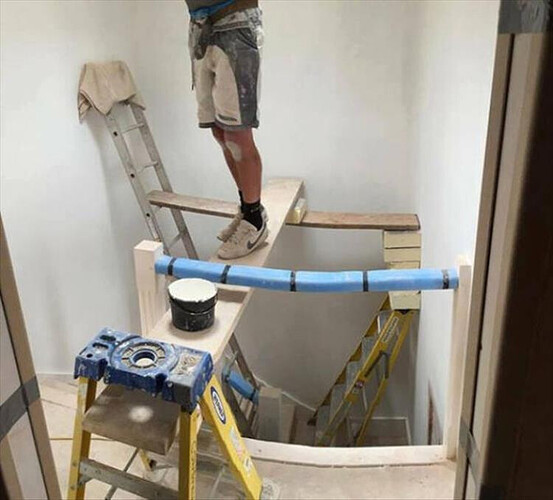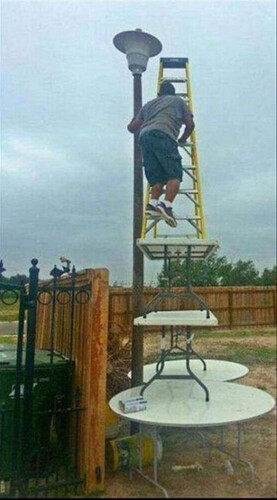Brand new to Hubitat and Zwave, but have largely rewired 3 of my houses, and used a lot of X-10 in the old days. And I'm a computer guy professionally.
I'm in an old house; the current one is 100 years old, lath and plaster walls, still some knob-and-tube wiring in place (rather less than when I bought it).
In our "media room" there is a ceiling fan with lights on it. There is a single ordinary wall switch on the wall, that seems to apply power to the whole thing, and then two pull-chains on the fixture itself, one of which turns the lights on and off and the other of which cycles the fan through 3 speeds and off. I imagine this is a very familiar setup to some of you; I know it is to me.
I haven't checked yet whether hot (and neutral) enter the wall switch box, hot gets switched, and then neutral plus switched-hot goes up to the fixture, or if hot and neutral come to the fixture on the ceiling and then there's a switch loop going down to the wall box. In various other rooms I've checked, I've found both configurations. Obviously the details of this matter, but exactly what each state means depends on what I'm trying to achieve and what switches / modules I'm trying to do it with.
I strongly want Zwave dimming on the lights. It's a four-bulb fixture using fancy bulbs (because the bulbs are visible), so I don't particularly want to use smart Zigbee bulbs to achieve the dimming. (For this fixture I need "pretty" bulbs, the current ones are LED flame bulbs with 4 apparent filaments, and high-CRI 4000K color temp because that's what I'm using everywhere, I'm an avid photographer and have a lot of other people's art as well, color matters, and that's just too complicated to also have to insist on Zigbee too.)
I'd kind of like to have Zwave control of the fan, at least on and off, but ideally speed control too (not just "speed as set with the pull chain").
The approach involving the most work, I think, is to expand the wall box with the current switch and add more runs between the fixture and the wall box. I could do this in the wall (probably involving a plaster patch where wall meets ceiling; I've done that, I'm not very good at it), or in surface-mount conduit (I've done that to add wall switches to ceiling lights in a few other rooms). Then it's easy; use a Zwave fan-controller for the fan part and a Zwave dimmer for the lights.
So clearly I'm unlikely to be completely skunked on my goals here.
But I'm fascinated by Zwave and I keep wondering what other approaches are possible, both for interest, and in hopes one of them might be easier.
For example, I can maybe put in a little dimmer module to handle just the lights (if unswitched hot is present in the ceiling; or if I add or repurpose wires to make it present)? And then handle the fan...somehow? Are there little fan control modules like the little dimmer modules, little relay modules, etc.? Things intended to be buried in a box rather than accessible in a wall box? And then, if there were two modules doing the actual work, repurpose the wall box to hold a button controller device which, through the hub, would control the modules controlling the fan? This can actually be done with hot entering either the ceiling fixture or the wall box (one reason I haven't checked yet). (All the button controllers I can find run on batteries, which does make this easier, but in general I want very badly to avoid batteries; are there wired-in button controllers?)
So, basically, I can think of lots of ways to do this, some of them requiring parts I haven't located yet but which might well exist, others using easily-available parts. I'm trying to figure what the trade-offs are, and most especially what I'm missing.
Would greatly appreciate people's thoughts on how to approach this kind of issue!
(This is not the first thing I'm doing! I've got some simple switch replacements and maybe a simple module install, and possibly even a track-lighting installation I've been putting off for most of a generation, 25 years, that would be a lot nicer with Zwave control. So I'll get some experience with that, and probably sensors and scene programming and things, before committing to how I'm going to do this fan. But...starting to research the fan now, so I have it settled before it's time to do it.)
 .)
.)








